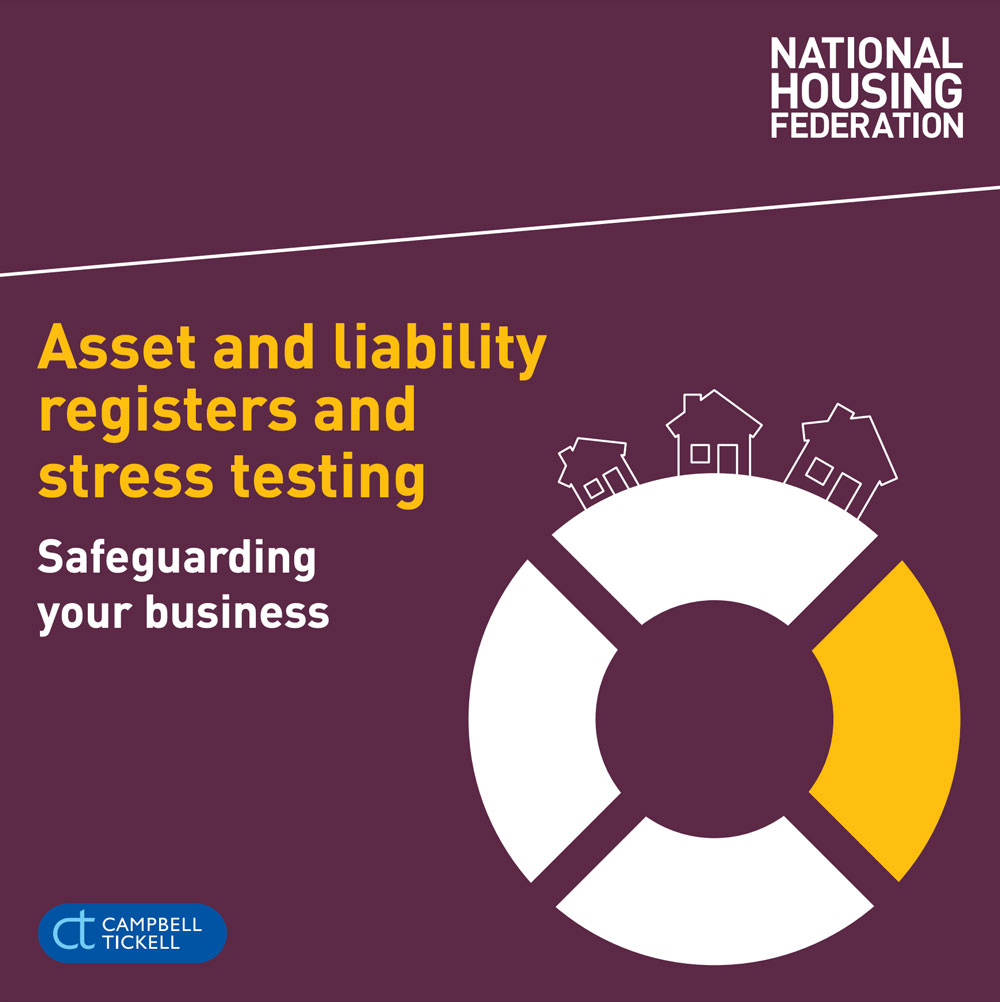Asset and liability registers
Has the experience in England and Wales strengthened the case for the use of such registers in Ireland?

FINANCE

Eddie Magowan
Senior Associate Consultant, Campbell Tickell
Registered providers of social housing in both England and Wales have, since 2016-2017, been required by the Regulator of Social Housing (RSH) and the Welsh Government’s Housing Regulation to maintain an Asset and Liability register. To what extent has the experience in England and Wales strengthened the case for such registers in Ireland?
Current picture
As it stands, paragraph 2.5 of the RSH’s Governance and Viability Standard states that “...registered providers shall assess, manage and where appropriate address risks to ensure the long-term viability of the registered provider, including ensuring that social housing assets are protected”. One of the specified means of doing so is by maintaining a “thorough, accurate and up to date” record of their assets and liabilities and “…particularly those liabilities that may have recourse to social housing assets”.
In Wales, in order to meet the PS.10, one of the performance standards set by Welsh ministers in accordance with section 33A of the Housing Act 1996, providers are required to demonstrate “a clear understanding of liabilities and asset performance” by “maintaining a thorough, accurate and up to date record of assets and liabilities, including all liabilities which have recourse to social housing assets”.
In Northern Ireland, the ‘financial controls’ section of the Housing Association Guide states that “it is the responsibility of the Board of the Association to ensure that good financial controls are in place”. These are deemed to include “controls over assets” where it specifically states that “controls, such as asset registers, are required to confirm the existence and value of assets and ensure their safe keeping”.
In Ireland meanwhile the 2019 Financial Standard and Assessment Framework for the Regulation of Approved Housing Bodies – which is currently under review – states that “AHBs should have a clear understanding and knowledge of their assets and liabilities”, and maintenance of an asset register is listed in the Standard as one of the minimum requirements expected of all AHBs.
But what advantages, if any, have housing providers and their regulator in England and elsewhere gained from the effort that has gone into developing and maintaining asset registers over past five years?

Register advantages
While opinions may vary, there is a general acceptance – particularly among funders and professional advisors – that the existence of an accurate, up-to-date record of an organisation’s primary assets and liabilities is a valuable resource. This is particularly true in situations where stock is being charged to secure new – or to restructure existing – funding, or where due diligence is being performed prior to a merger, stock transfer or joint ventures. This can serve to reduce the time, and ultimately the cost of such initiatives.
Other distinct advantages can flow from the asset register requiring a ‘one version of the truth’ discipline across multiple datasets if the “thorough, accurate and up to date” principles are to be met. For example, regulatory return processes, monitoring of key contracts and ensuring that contingent liabilities (including contagion risks between group entities and joint ventures) are visible and linked to the risk register are improved, by having the various components of the asset register operating live in the day-to-day business.
From a regulatory and governance perspective, the discipline of maintaining a register via a formal policy – which ideally ensures that the audit committee has proper oversight of the process – can provide the board with valuable assurance. This encompasses the current state of play and the risks which they, as guardians of the organisation’s social housing assets, are charged with managing to the best of their ability. Having a real time baseline against which regular stress-testing of financial forecasts can be run greatly improves the integrity and value of the process. Given the pace of change and uncertainty of the environment in which most providers now find themselves, this can only benefit board discussion and decision-making.
Next steps
Guidance to assist providers devise an asset and liability register is provided in a National Housing Federation publication Asset and liability registers and stress testing – safeguarding your business, which Campbell Tickell wrote. In essence this recommends that each housing provider should construct its own asset and liability register that is proportionate to the size of the organisation and best reflects its corporate structure, funding arrangements, material partnerships, contracts, etc.
They should also have regard to the information systems already in place, as it is very likely that the register will not be a single document, but will be sourced from multiple data sources. This can be done via a hyperlinked index that facilitates a dynamic view of the information and reduces the need for additional system and overhead costs.
Campbell Tickell has assisted a number of housing providers – including one in Northern Ireland – to define a structure for and devise formal policies and action plans to implement an asset and liability register in their organisation.




